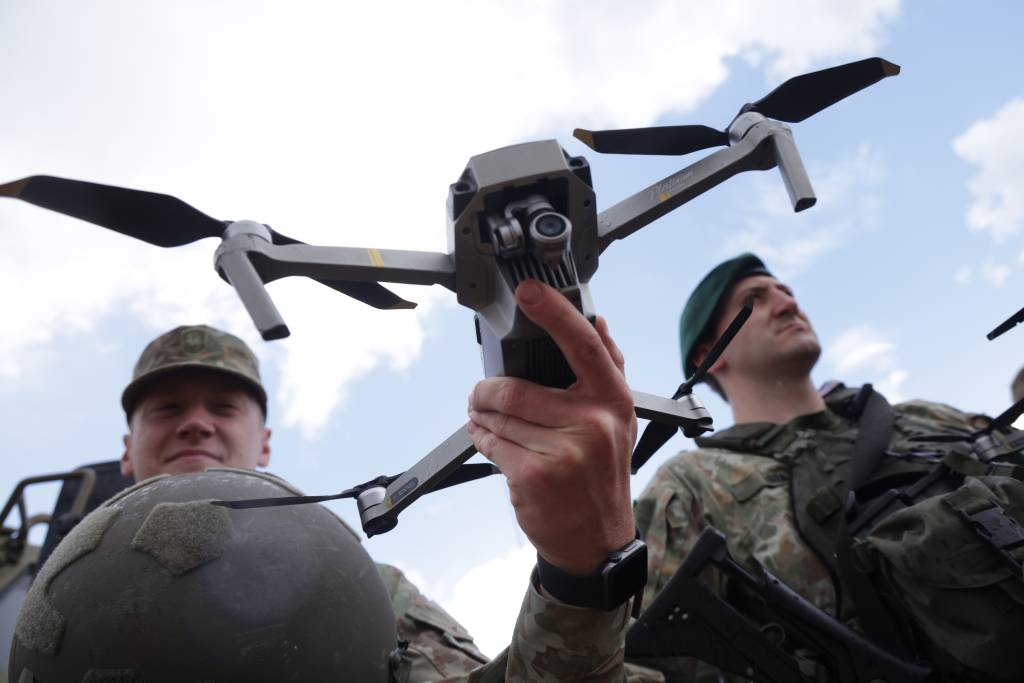CONSTANTA, Romania — After months of delays, NATO has adopted its first counter-drone doctrine, testing its tenets in an exercise along the Black Sea shore that was marred by real-life interference wafting across the water.
The focus of the Ramstein Legacy drill, held June 3-14, was on developing the alliance’s integrated air and missile defense with an additional eye on combating Class 1 unmanned aerial system threats — a reference to small, mini and micro drones.
Participating units hailed from Romania, Germany, Portugal, Hungary, France, Turkey and Poland, supported by British and Finnish fighter jets. In addition, three companies were invited to introduce some of their counter-drone equipment, including the U.S.-based firm Echodyne, the French CS Group, and German electronics specialist Rohde & Schwarz.
“Class 1 UAS have become one of the most important threats we observe at the moment in military conflicts. Where for many years having air superiority was one of the pillars of the NATO doctrine, we have seen recently that’s no longer the case,†said Cristian Coman, chief scientist at the joint intelligence, surveillance and reconnaissance center at NATO’s Communications and Information Agency (NCIA).
On the first day of the training, participants were asked to get familiar with the capabilities of the systems at the exercise, including electronic warfare equipment, radars, and command-and-control systems.
The following days were focused on practical exercises and hands-on training, with each scenario increasing in difficulty. Part of the personnel involved in this segment were officers from the Italian C-UAS Center of Excellence, who performed the job of the enemy.
“We are here acting in the role of the red team in this exercise, where we are the threat the trainees need to identify and counteract. We are flying the drones, which are common civilian ones,†Italian Navy Lt. Cmdr. Federico Fugazzotto told reporters.
Some of the models displayed included the American-made Parrot Disco first-person-view drone as well as two Chinese-made DJI types. Exercise participants were instructed to use their detection equipment for picking up the drones’ electronic signatures.
According to Fugazzotto, increasingly complex scenarios entailed flights of varying lengths, hiding the drones’ points of departure on the ground, and attacking with multiple systems at once.
Crimea mirage
As the training unfolded, experts with NCIA confirmed to Defense News that GPS spoofing was detected and affected some of the drones, though officials did not name the source. The interference method feeds false coordinates to drone navigation systems in an effort to crash or disorient them.
“When I had the hand-held device from the drone, where you basically have the controller, my hand device would ‘be’ on a foreign location in Crimea,†Mario Behn, the principal scientist at NCIA, told Defense News. “But the drone was still here, which of course is physically impossible, as it is a huge range,â€
On both days of Ramstein Legacy, data provided by the website GPSJam showed a high level of GPS interference that encompassed all of Constanta.
Military personnel here were vague about anti-jamming techniques and equipment used to mitigate interference, citing security concerns in revealing Western countermeasures.

The extensive level of jamming was also apparent in the area surrounding the nearby Mihail Kogalniceanu air base, where Finnish F/A-18 fighter jets and British Eurofighters were deployed. The exercise marked Finland’s first foreign deployment for NATO since joining the alliance in April 2023.
When asked if he was used to flying amid this amount of jamming, Lt. Col. Rami Lindström, commander of the Finnish F/A-18 detachment in Romania, acknowledged the GPS interference but appeared unfazed about it affecting the equipment.
“We have a lot of reports in Finland about the same kind of jamming, so we are used to that. But the F-18 is a warhorse and is resistant against that,†Lindström told Defense News in an interview.
“You can say we know our neighbor and we like to share this knowledge with our allies,†the Finnish official added, referring to Russia.
Back to school
In 2019, NCIA established an academy in Oeiras, Portugal, to provide training on NATO systems devoted to communications, air command and control, and cybersecurity. With drones omnipresent in today’s military thinking, the school’s emphasis is about to change.
“Our idea would be to add a counter-UAS curriculum with educational courses followed by enhanced practical training, which would be very easy to integrate at the Portugal academy,†Behn said.
There are some hurdles to that end, however, especially when it comes to standardizing hands-on training.
For one, the drone arsenals of NATO countries are so diverse that finding cross-cutting training approaches will be tricky. That is in addition to the ceaseless cat-and-mouse game of buying improved drones and superior countermeasures.
“Procurement processes take years, except we don’t have years to defend against those small drone threats,†Coman said.
Elisabeth Gosselin-Malo is a Europe correspondent for Defense News. She covers a wide range of topics related to military procurement and international security, and specializes in reporting on the aviation sector. She is based in Milan, Italy.








